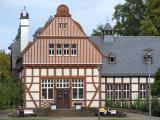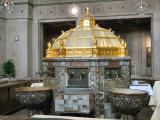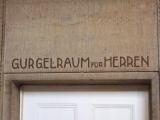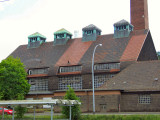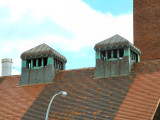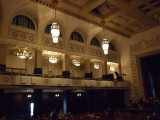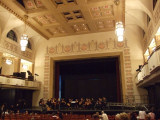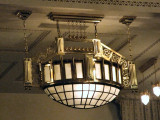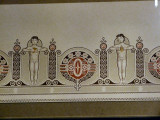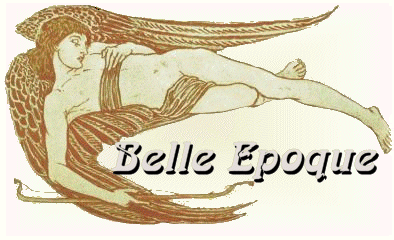The Belle Epoque in Europe
Germany
Hessen: Bad Nauheim
"My Hessia is to flourish, and in it the arts"
Ernest Louis of Hesse, March 24, 1900
Around 1900, the spa town Bad Nauheim enjoyed a good international reputation. Not only that the number of patients had
considerably increased every year, but the spa became more and more attractive for politicians, nobility and high finance.
At that time, Bad Nauheim, being situated about 35 km north of Frankfurt, belonged to the Grand Duchy of Hesse-Darmstadt
which, since 1892, was reigned by Ernest Louis
of Hesse and by Rhine, the same who, in 1899, had founded in Darmstadt the Artists'
Colony Mathildenhöhe. This enthusiastic
patron of the arts granted more than ten millions of gold mark for the extension of the spa complex. Moreover, he sent the
Grand-Ducal Civil Engineering Inspector, the young architect Wilhelm Jost (1874-1944), to design, to develop and to manage
the constructions and conversions of the spa buildings.
Behind the station (1) is the powerhouse of the spa, the vapour laundry and ice-making works. The spa's heart consists
of the Sprudelhof (2) (spring court). The Kurhaus (3) (spa hotel) was modified and decorated with
rich Jugendstil paintings. The Trinkkuranlage (5) (drinking cure facility) has a courtyard with colonnades
and a park with a concert hall. The former inhalatorium (6) is now the municipal library.
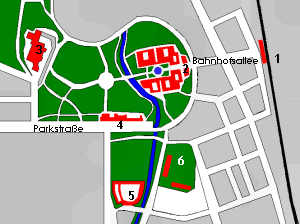
- Station
- Sprudelhof (1905-1911)
- The Spa Hotel
(1862-64) - Colonnades
- Drinking Cure Facility (1910-12)
- Former Inhalatorium (1902)
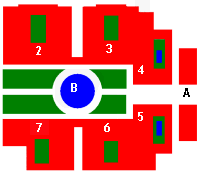 A Administration buildings
A Administration buildingsB Fountain basins
2-7 Bath houses
Wilhelm Jost (1874-1944)
Sprudelhof (1905-11)
The Sprudelhof is located in the middle of the axis leading from the station to the spa hotel. Between two administration buildings arranged in a sort of gate lodges, a wide staircase leads down into the inner court where on each side stand three bath houses connected to each other by arcades. The whole complex gives the overall impression of a baroque palace. Three monumental basins of the three mineral springs were built in the centre of the courtyard by the sculptor Heinrich Jobst (1874-1943), one of the numerous artists coming from the Artists' Colony in Darmstadt besides Jakob Julius Scharvogel (1854-1938), Friedrich Wilhelm Kleukens (1878-1956) and Albin Müller (1871-1941).
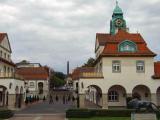
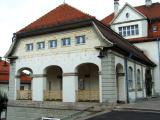
Administration building
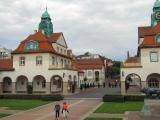
Bath houses
4 and 5
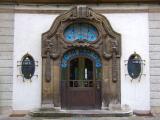
Entrance
Administration bldg
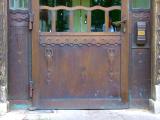
Entrance
Administration bldg
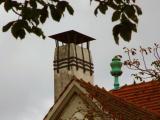
Chimney
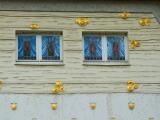
Administration bldg
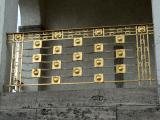
Administration bldg
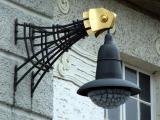
Administration bldg
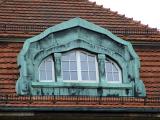
Roof-light
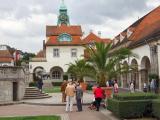
Central Courtyard
with Spring Basins
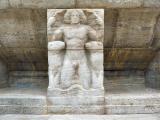
Basin Sculpture
The decoration of the buildings refers in most details to water: In the plaster, structures forming waves can be recognized, on walls and balustrades you see air or gas bubbles and waterdrops, the lanterns are suspended on fish heads, in the stained glass windows undulate the waves.
Bath Houses 3 to 5
The outline of all bath houses is similar: The entrance leads into a vast waiting room richly decorated. Behind this room is the Schmuckhof (literally ornament court), an inner court reminding of a monastery's cloister. The bath cubicles are found on each side of the Schmuckhof separated from the court by a gallery. On the backside of the inner court are buildings for functional purposes.
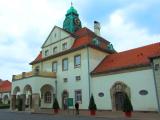
Bath House 4
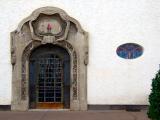
Bath House 4
Entrance with
stained glass
window
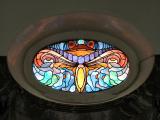
Bath House 5
Stained glass
from inside
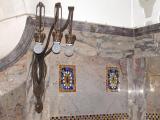
Bath House 5
Lamp and
decoration
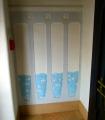
Bath House 5
Water theme
at the entrance

Bath House 5
Waiting Room
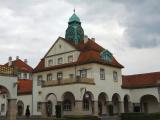
Bath House 5
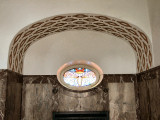
Bath House 5

Bath House 5

Bath House 5
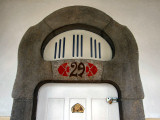
Bath House 5
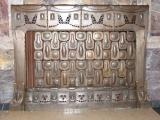
Bath House 5
Fireplace

Bath House 5
Door into the
inner court

Bath House 5
Door of the
inner court
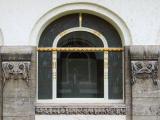
Bath House 5
Window to the
inner court
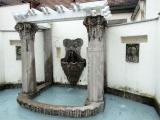
Bath House 5
Fountain with
marine brood
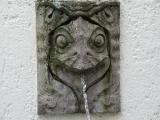
Bath House 5
Sculptures of
shell limestone
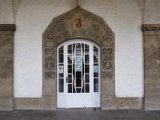
Bath House 3
Entrance
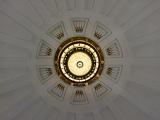
Bath House 3
Ceiling of the
waiting room
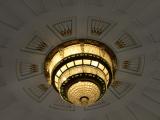
Bath House 3
Ceiling lamp
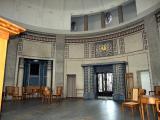
Bath House 3
Circular
waiting room
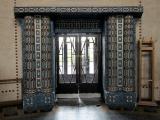
Bath House 3
Entrance door
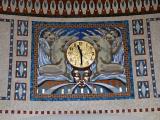
Bath House 3
Wall Clock
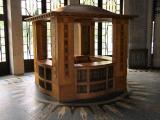
Bath House 3
Reception
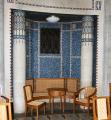
Bath House 3
Furniture made
from cherry
tree wood

Bath House 3
Court with
rosarium
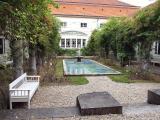
Bath House 3
Court with
rosarium
In the Bath House
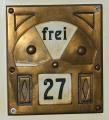
Cabin No. 27
is free
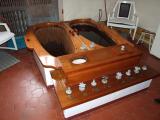
Bath tubes from
precious wood

White matt-
lacquered
furniture
by Jost
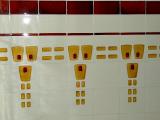
Decorated wall
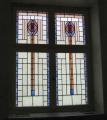
Stained glass
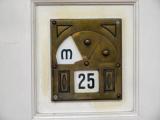
A man!
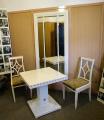
Changing room of
a prince's cabin
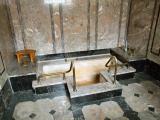
Bath tub in a
prince's cabin
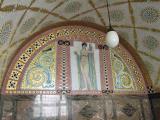
Anadyomene
Bath House 7
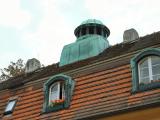
Bath House 7
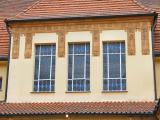
Bath House 7
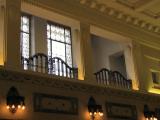
Gallery in the
waiting room
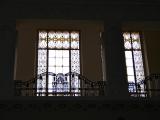
Stained glass
and balustrades

Fireplace
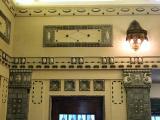
Ceramic decor
by Scharvogel
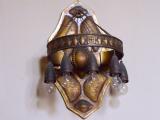
Lamp
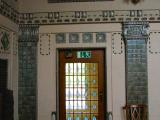
Ceramic decor
of the
waiting room
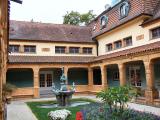
Terracotta
courtyard
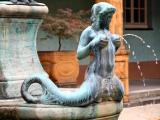
Fountain and
sculptures by
Jobst

Fountain and
sculptures by
Jobst
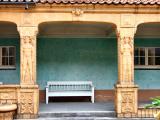
Reliefs by
Scharvogel
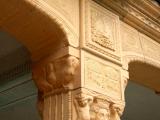
Reliefs by
Scharvogel

Reliefs by
Scharvogel
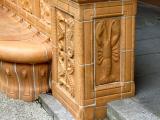
Reliefs by
Scharvogel
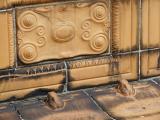
Reliefs by
Scharvogel
